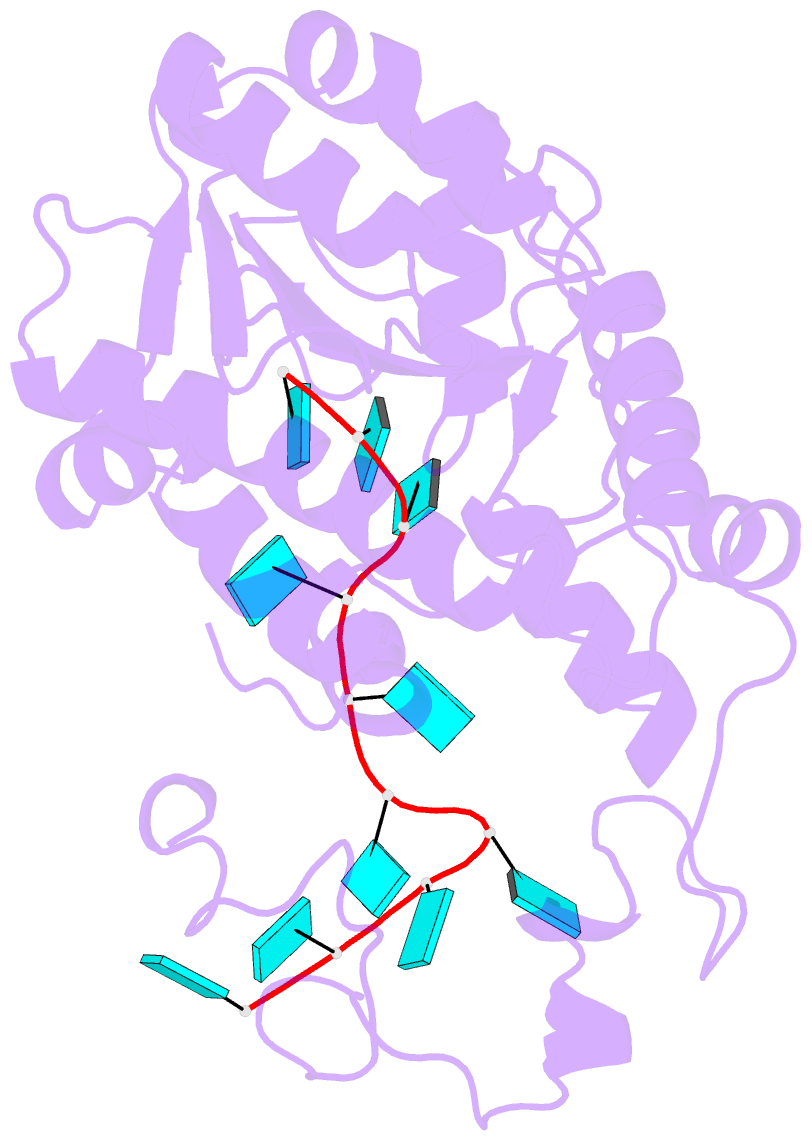Summary information and primary citation
- PDB-id
- 7c45; SNAP-derived features in text and JSON formats;
DNAproDB
- Class
- RNA binding protein-RNA
- Method
- X-ray (1.769 Å)
- Summary
- The crystal structure of trypanosoma brucei rnase d complex with RNA u12
- Reference
- Gao Y, Liu H, Zhang C, Su S, Chen Y, Chen X, Li Y, Shao Z, Zhang Y, Shao Q, Li J, Huang Z, Ma J, Gan J (2021): "Structural basis for guide RNA trimming by RNase D ribonuclease in Trypanosoma brucei." Nucleic Acids Res., 49, 568-583. doi: 10.1093/nar/gkaa1197.
- Abstract
- Infection with kinetoplastid parasites, including Trypanosoma brucei (T. brucei), Trypanosoma cruzi (T. cruzi) and Leishmania can cause serious disease in humans. Like other kinetoplastid species, mRNAs of these disease-causing parasites must undergo posttranscriptional editing in order to be functional. mRNA editing is directed by gRNAs, a large group of small RNAs. Similar to mRNAs, gRNAs are also precisely regulated. In T. brucei, overexpression of RNase D ribonuclease (TbRND) leads to substantial reduction in the total gRNA population and subsequent inhibition of mRNA editing. However, the mechanisms regulating gRNA binding and cleavage by TbRND are not well defined. Here, we report a thorough structural study of TbRND. Besides Apo- and NMP-bound structures, we also solved one TbRND structure in complexed with single-stranded RNA. In combination with mutagenesis and in vitro cleavage assays, our structures indicated that TbRND follows the conserved two-cation-assisted mechanism in catalysis. TbRND is a unique RND member, as it contains a ZFD domain at its C-terminus. In addition to T. brucei, our studies also advanced our understanding on the potential gRNA degradation pathway in T. cruzi, Leishmania, as well for as other disease-associated parasites expressing ZFD-containing RNDs.





